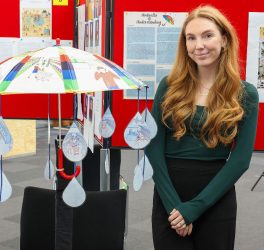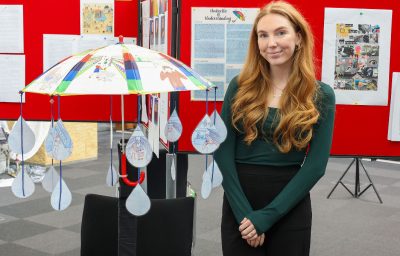
Advocates for Canadians with disabilities related to reading printed text are crying foul of the Trudeau government’s plan to cut their funding — a surprise move they say will be “devastating” in the middle of a pandemic.
Print disabilities include any condition which negatively affects someone’s ability to read traditional print materials including blindness, dyslexia, Parkinson’s and cerebral palsy.
Currently, the Centre for Equitable Library Access (CELA) and the National Network for Equitable Library Service (NNELS) receive $4 million in funding. According to the Liberal government’s 2020 Fall Economic Statement, this will be phased out over four years. Funding for both services will be completely eliminated by the 2024-25 fiscal year.
Kevin Millsip, executive director of the B.C. Libraries Cooperative, the parent organization for NNELS, said of the announcement, “It felt like a bit of a punch in the gut. We know that the federal government has said to us that they feel this work is important.”
Millsip said these federal funding cuts would cause staff layoffs, many of whom have visual disabilities.
Both CELA and NNELS use the federal funds to curate and distribute accessible books, such as braille and audio books. CELA provides access to a collection of almost 900,000 titles.
Kim Kilpatrick, who has been blind since birth and reads primarily by braille, said the timing of the planned cut is shocking.
“I was really, really surprised that this is the time they’d choose to cut something which is helping us get through this isolation and COVID,” Kilpatrick said.
The organizations were not warned about the impending cut. Now, they’re fearful about having to drastically reduce their production of accessible reading material.
“This will have a devastating impact on our users. People with disabilities are already disproportionately affected, particularly with the pandemic right now,” said Laurie Davidson, CELA’s executive director.
“So certainly now is not the time to do the cuts. But on an ongoing basis, this is essential work to make sure that everyone has equitable access to reading.”
Marielle Hossack, spokesperson for Employment Minister Carla Qualtrough, said, “Our government recognized that in order to find a long term solution to the problem of making published materials accessible to people with print disabilities, we needed to bring partners from different sectors to the table.”
“The Fall Economic Statement signalled our continued commitment to embrace the potential of new technology and production practices that are inclusive from the start. By supporting a wide range of initiatives that address social issues and barriers that confront persons with disabilities, we can offer greater support and have a long-lasting impact on the production and distribution industry.
“With all this in mind, we know the pandemic has created real challenges for this transition in publishing. We are committed to continue working with the disability community every step of the way to find the right solutions.”
Both the Conservatives and the NDP have voiced their opposition to the cut.
Daniel Blaikie, NDP critic for future workforce development and disability inclusion, said, “It seems to me that these organizations have been reliably providing an important service.”
“The amount of money they need to do that is a drop in the bucket when we talk about the overall federal budget, and they’ve spent a number of years developing the capacity and the skills in order to deliver this. It seems a shame that they’d be winding that work up when Canadians with visual impairments continue to need accessible materials in order to be able to do any number of things.”
CELA and NNELS say that fewer than one in 10 books available in Canada are in an accessible format. They estimate that approximately three million Canadians have a print disability.
The fall economic statement says the funding is meant to be a “transition” toward “industry-based production and distribution” of accessible reading materials — inferring the government is hoping the private publishing industry will pick up the work being done by CELA and NNELS now.
But Davidson said that “Industry will not be able to fill the gap.”
She said that while publishers have made strides in producing accessible versions of books, they still don’t do it for most titles — and when they do, they tend to opt for audio books instead of braille.
“Braille has a smaller user base, and yet is very important to people who are blind and read by braille,” Davidson said.
Cathy McMillan, the founding director of Dyslexia B.C., said she believes the funding cuts will damage an industry that is already underfunded.
McMillan and both of her daughters are dyslexic. She said that Canada has lagged behind the US when it comes to providing accessible reading options for people with print disabilities.
“[My daughter’s] whole high school existence, we were gearing up for her to go to the U.S., because access to materials like that was better,” McMillan said.
“It’s pretty sad that Canada isn’t great for access to print materials for people with print disabilities, and they’re effectively going to make it worse.”
Millsip said he believes the government can afford to reverse its decision.
“It’s been clear to us throughout this pandemic that when there’s a will, there’s a way. And what we’re saying to the federal government is, ‘Find the will, and make the way, to restore this funding,'” he said.
“Why would you make cuts to this community, at this time? There’s no logic there.”








